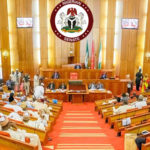nOT less than 80 bills for the creation of tertiary institutions, including universities, polytechnics and colleges of education, are reportedly in the works at both chambers of the National Assembly. If all the bills survive legislative scrutiny and are passed into law, the number of federal tertiary institutions in the country will balloon to 164. For a population on the threshold of 200 million, with the number of applicants seeking admission into tertiary institutions in excess of 1.5 million and with less than a third of this figure succeeding annually, the proposed increase in the number of tertiary institutions would appear to be justified. The population of qualified applicants who do not secure admission into institutions of higher learning for lack of space is quite huge. However, the federal legislators’ approach to solving what is undoubtedly a national challenge is debatable given the official track record of the poor funding of the existing tertiary institutions.
SSANU to commence 3-day nationwide protest Monday
To be sure, it is not that more tertiary institutions are not needed. But the precarious state of existing academic institutions occasioned by poor funding, which in turn engenders obsolete facilities and endemic strike actions by workers, clearly does not recommend the establishment of new ones. It is axiomatic that the education sector is grossly underfunded and this becomes more manifestly so at the tertiary level. In the past few years, the Academic Staff Union of Universities (ASUU) and its counterparts in the polytechnics and colleges of education have had to embark on strikes to draw official attention to their grave financial needs. For instance, ASUU has been on strike for close to one month now over inadequate funding of research and infrastructure in the federal universities. Its counterpart in the polytechnics, the Academic Staff Union of Polytechnics (ASUP), also joined the fray a few days ago over issues which also border on funding. It therefore beggars belief that the National Assembly is contemplating the creation of a behemoth of cost centres to compound the already bad situation.
Strangely, this is being done at a time when some stakeholders are calling for the declaration of a state of emergency in the education sector because of its parlous state caused largely by funding challenges. If created, the new tertiary institutions are expected to put pressure on the national budget to the tune of hundreds of billions naira annually for staff salaries, research, infrastructure and day-to-day operations. Given the reality on the ground, the seemingly well-intentioned strategy to bridge the yawning gap between the large number of applicants vis-a-vis the available spaces in the tertiary institutions is patently sub-optimal and indeed inappropriate and unworkable.
In the present circumstance, it is better wisdom to deal with the issues confronting the existing tertiary institutions head- on rather than establishing new ones that may end up being poorly funded. Tertiary institutions should be seen beyond the trophies that politicians must win for their constituencies to impress constituents and canvass for votes; they constitute the bedrock for producing the critical human capital needed for economic growth and national development. And for that important reason, the question of value added and standards should be more paramount and studiously addressed. At best, the existing tertiary institutions should be well funded and expanded by the addition of new infrastructure, facilities and human capital needed to create room for the admission of more applicants.
Surely, one existing university that is well-funded and expanded with improved facilities can double its capacity to attain the objectives of two. That way, tremendous cost will be saved, especially in the deployment of resources that do not change with changes in the population of students. And in the current case, substantial cost savings can be achieved by doing away with the hiring and maintaining of 80 new vice-chancellors, registrars, bursars and so on. Also, it will not be out of place for the government to support the private universities financially so that they can admit more students. Many of them are currently operating below their capacities.
Generally, it is imperative to rethink the official penchant for the creation of bloated bureaucracy, especially in the face of dwindling revenue profile. Leaders and decision makers are called upon to solve problems and attain specific objectives subject to certain constraints. It is lazy and indeed it smacks of mischief for leaders to go about addressing challenges as if constraints do not exist. This tendency has over time led to the disproportionate allocation of over 70 per cent of the federal budget as cost of governance! This sordid trend needs to be reversed and it is ordinarily expected that members of the National Assembly, the acclaimed representatives of the people, will be at the vanguard of the attainment of this goal and not the other way round.





